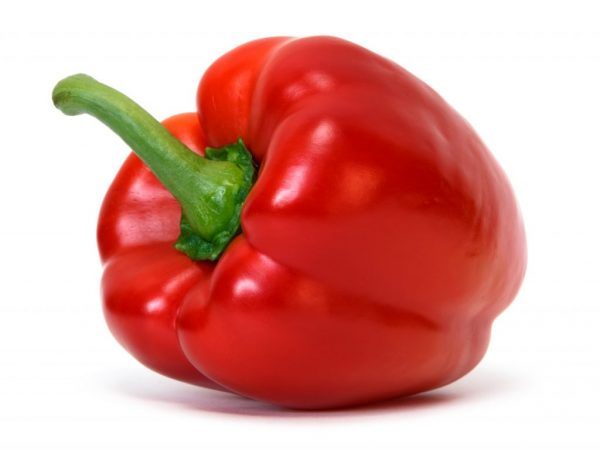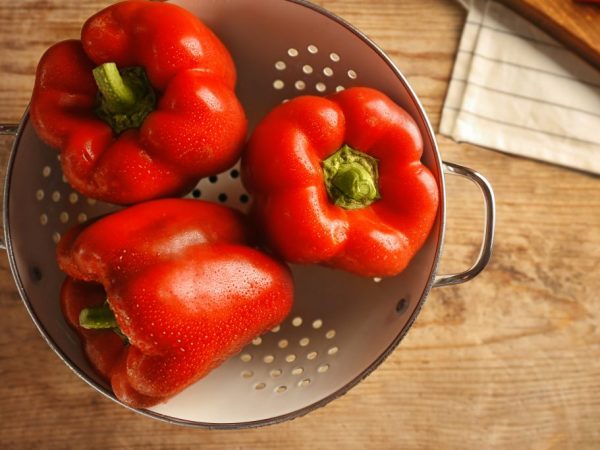Description of Agapovsky pepper
What could be tastier and healthier than juicy and tasty vegetables? They are simply irreplaceable, as they are a source of vitamins and minerals. Agapovsky pepper is a worthy representative of vegetable crops. In terms of vitamin C content, this vegetable crop surpasses even lemons and currants. What is special about Agapovskiy pepper? How to grow it properly? What care is needed to get a good harvest?

Agapovsky pepper
Characteristics of the variety
Bell peppers have a number of characteristics associated with the origin of this horticultural crop. It grows best in warm places, which is why greenhouses are usually used for planting.
The characteristic indicates that Agapovsky sweet pepper belongs to the early maturing varieties. This is an annual garden vegetable crop. It takes about 120 days to grow (from planting to full maturity). It is characterized by a good fruit yield (9.5-10.3 kg / sq. M).
The characteristic suggests that the variety is distinguished by its versatility in use (fresh, in various preserves).
Description of the fetus
The fruit is hollow, has a shape similar to a prism, and is large in size. The taste is fresh, sweetish. The fruits are juicy and have a pleasant characteristic aroma.
The surface of the pepper is smooth, slightly ribbed. When technical ripeness comes, it becomes dark green, while at biological ripeness - bright red. The fruits have a rather large mass (about 120 g), and the wall thickness is up to 7 mm.
Description of the bush
Description of the bush: the plant has a compact size, medium height This is a clear advantage for people who grow this crop on small plots of land, for example, in a house plot or a small vegetable garden.
There are a lot of leaves on the stem. They are dark green, large and wide. On the plant, the fruits are located drooping.
Growing

Peppers need to be sprayed
The description says that at the time of transplanting, the seedlings should be 95-100 days old. It is best to immediately plant the seeds in single peat pots, since the culture does not tolerate diving well.
- Before planting, the seeds must be allowed to lie in warm water.
- Then they are planted in small peat pots, covered with plastic wrap or glass.
- Do not forget about the temperature regime - not less than 20 ºС during the day, 15 ºС - at night.
- Lighting in the initial stages does not play a big role.
- Water the seedlings with warm water and make sure that the soil does not dry out.
It is worth planting in open ground in May-June, and in a greenhouse in April. Remember not to expose the roots! It is recommended to plant additionally other tall crops (tomatoes, corn) between the beds of pepper, as it is susceptible to over-pollination.
Culture care
The principle of caring for peppers, like most similar garden crops, consists in timely watering, feeding, garter and other procedures aimed at improving the yield and quality of the fruit.
The variety is very sensitive to drought, so you need to be especially careful about the amount of water in the soil. Watering is necessary twice a day: in the morning and in the evening. In dry times, it is worth increasing the amount of watering. But, as in any other business, the main thing is not to overdo it, since the root system can simply rot from an excess of moisture.
It is in your power to attract insects to the garden. The culture needs pollination. It is necessary to spray the plants with a solution of sugar in water.
Feeding is done with chicken droppings no more than four times during the growing season, mineral fertilizers or nettle infusion.
Possible diseases
Most often, sweet peppers are affected by diseases such as white and apical rot, black leg. To warn them, you need to carefully monitor the amount of watering.
The culture is susceptible to pests: slugs, aphids, whiteflies, Colorado potato beetle. They fight insects not only in folk ways, but also with the help of chemicals.
The characteristic indicates that the Agapovsky variety is resistant to the tobacco mosaic virus.
Conclusion
Growing Agapovsky peppers is a good solution for your garden. This crop has a high yield of large fruits that have excellent taste and fresh characteristic aroma. The culture contains many vitamins and minerals necessary for the body.


